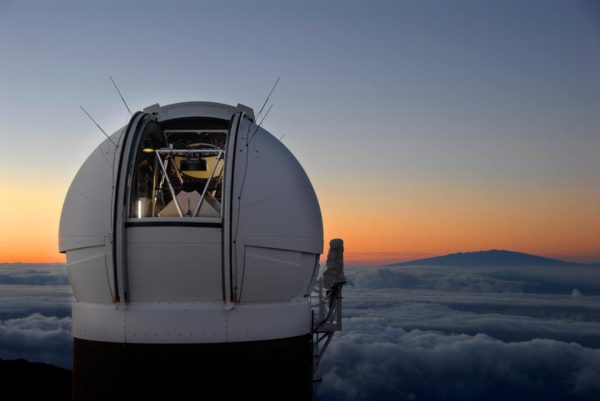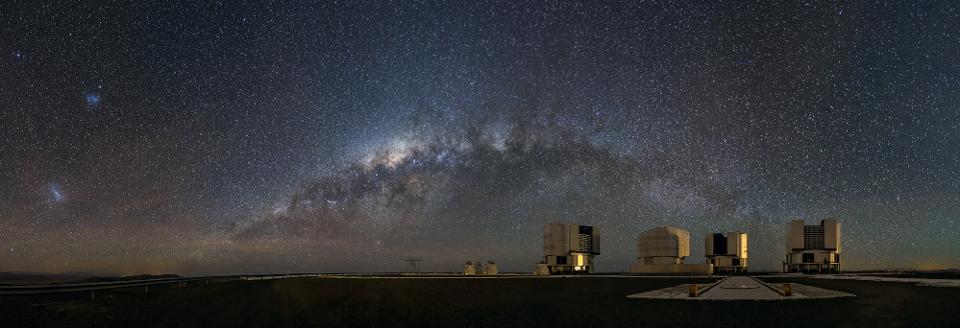How Covid-19 Is Changing Big-Time Astronomy – Forbes

The Pan-STARRS1 Observatory on Halealakala, Maui, opens at sunset to begin a night of mapping the … [+] sky.
Rob Ratkowski
Covid-19 has already ravaged ground-based astronomy by closing observational science operations the world over. But the professional astronomical community has long been ahead of the curve in virtual and robotic technology. And if anything, the pandemic has only strengthened this global community’s resolve to innovate and function under quarantine.
Most importantly, a few robotic observatories like the Pan-STARRS astronomical observatory in Hawaii is still tracking asteroids and comets in case one should come close enough to pose a threat to Earth, Villanova University astronomer Edward Guinan told me.
But even robotic technology and remote observations have their limits.
Some robotic observatories have continued to operate during the pandemic but the need for regular maintenance is gradually halting even the most automated facilities, says Metcalfe.
What about space based observatories?
“Space-based observatories (like Hubble, Chandra, etc.) continue to work, as their schedules can be prepared and uploaded remotely,” Michigan State University astronomer Megan Donahue, the AAS’ President, told me. The main “hands-on” aspect of the space-based observatories, she says, is ground-based antennas physical maintenance, for communications with the spacecraft.
What about forthcoming conferences?
“Every summer conference that I planned to attend this year has already been delayed to next summer,” Travis Metcalfe, a senior research scientist at the Space Science Institute (SSI) in Boulder, Colo., told me.
The American Astronomical Society (AAS) has shifted its June meeting to fully virtual, reduced it to only three days, and dropped the registration rates.
“We have more than twice as many submitted abstracts as we had on hand at deadline for the in-person meeting and our registration total is moving up each day (now more than 750 people with a month to go before the deadline),” Kevin Marvel, the AAS’ Executive Officer, told me. He says that also includes more than 20 different countries now represented with participants from as far away as Australia.
The summer meeting is even having an online virtual version of its popular social “open mic” entertainment event.
As for later this summer and next year?
The AAS Solar Physics Division (SPD) has canceled the meeting it was going to hold in August in Minneapolis, Minnesota. Two more division meetings —- the AAS High Energy Astrophysics Division (HEAD) meeting in September in Tucson, Ariz. and the AAS Division for Planetary Sciences (DPS) meeting in October in Spokane, Wash. —- risk either being postponed or canceled. The AAS hopes that its January 2021 meeting in Phoenix, Arizona, will still be able to be held in person. But that will likely depend on where we stand in the fight against this virus.
And Guinan says that all International Astronomical Union (IAU) Symposia originally scheduled for the next several months have been pushed back to 2021.

This stunning panorama shows the Milky Way galaxy arching above the platform of ESO’s Very Large … [+] Telescope (VLT) on Cerro Paranal, Chile. The VLT is now temporarily closed due to the Coronavirus.
John Colosimo (colosimophotography.com)/ESO
How is the community dealing with this current lack of physical interaction?
“Science is a community activity and the community has been broken up,” said Marvel. “Some interaction is still taking place, but nothing like normal.”
But Guinan is doing his best, noting that a recent Zoom talk to a local county astronomical society was punctuated with the attendees imbibing in beer and wine. I joined in with a glass of Pinot Noir and we all toasted each other at the end, he says, noting that he got to know many more people virtually than if he had been physically present at the event.
Guinan says online links are also being used for more serious matters, as astronomical peer review panels for NASA missions are being done online.
The pandemic has even spurred the IAU’s Office Astronomy for Development (OAD) to invite proposals for projects and partnerships that use any aspect of astronomy —- from methodologies to infrastructure —- to help mitigate some of the virus’ impacts.
And even pandemics can have a silver lining.
“One of the few bonuses of the Covid-19 pandemic is that air pollution is way down and clouds created by plane contrails are almost gone,” said Guinan. The air is very clear —- almost like the pre-industrial times, he says. Guinan says that a few nights ago he was even able to track the supergiant star Betelgeuse to within a few degrees above the western horizon.
Previously a star would vanish in the atmospheric muck just above the horizon, says Guinan. These nights that’s no longer the case.





